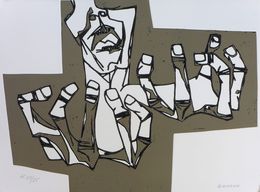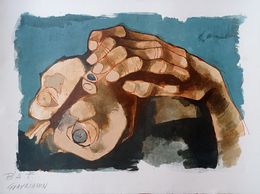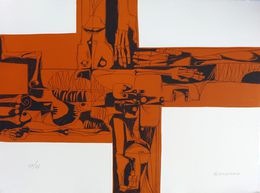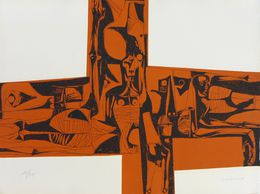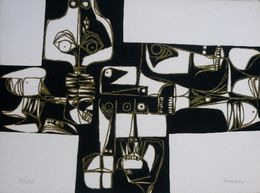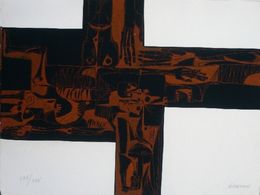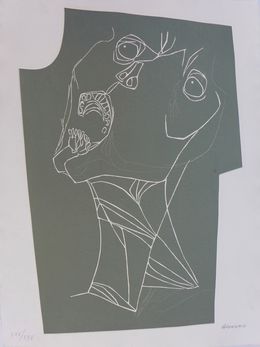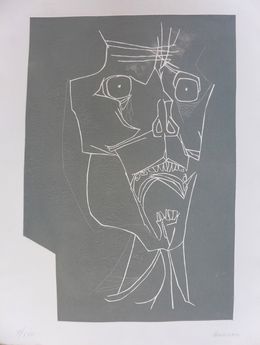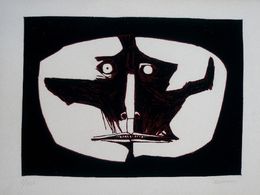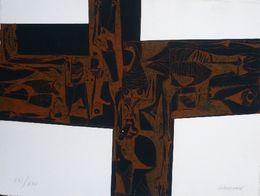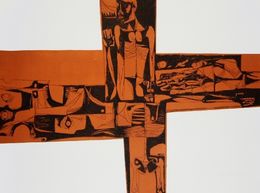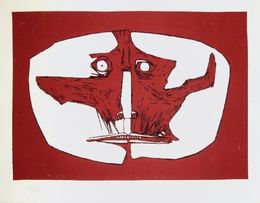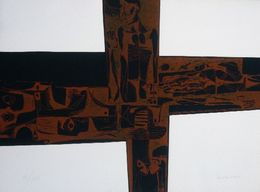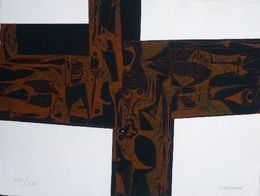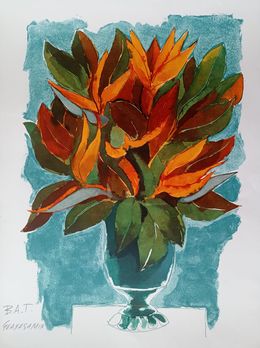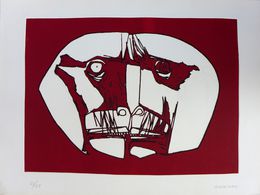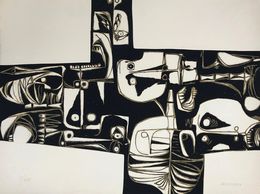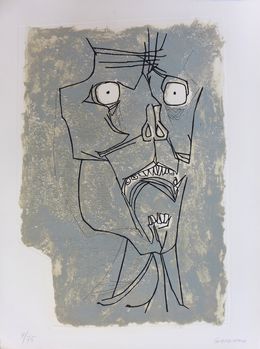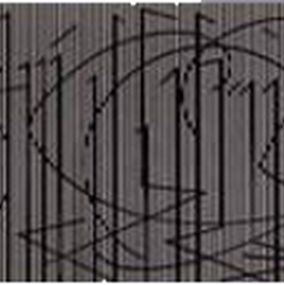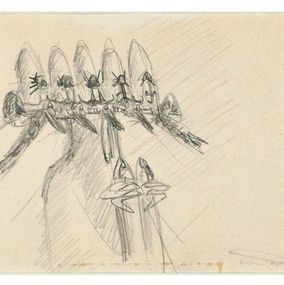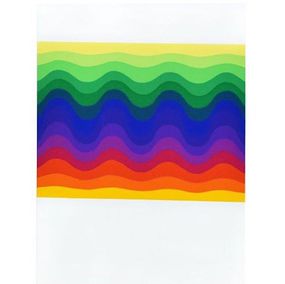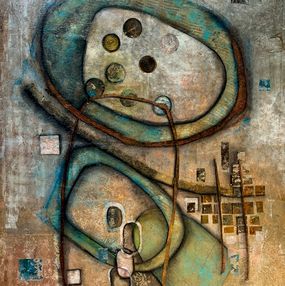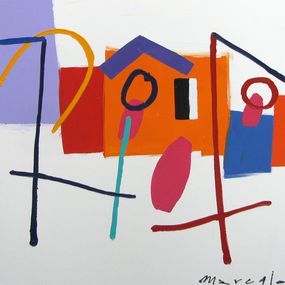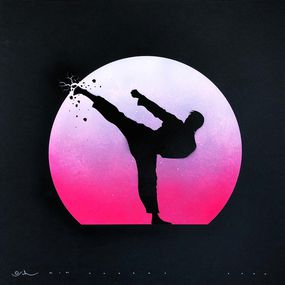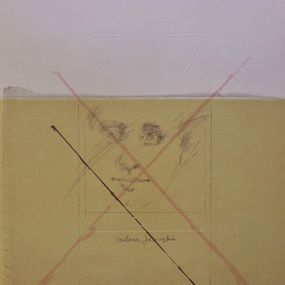
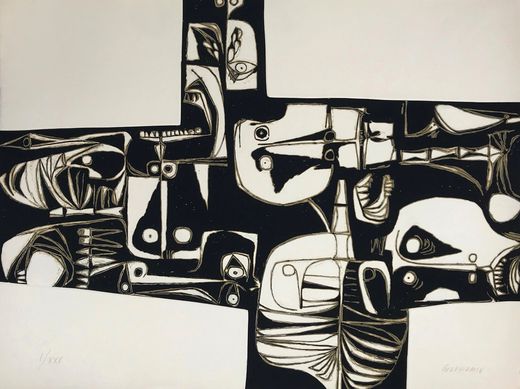
Biography
Oswaldo Guayasamín was a master Ecuadorian painter and sculptor of Quechua and mestizo heritage.
Guayasamín was born in Quito to an indigenous father and a mestizo mother, both of Quechua descent. His family was poor, and his father worked as a carpenter for most of his life. He later worked as a taxi and truck driver. He was the eldest of ten children. As a child, he enjoyed drawing caricatures of his teachers and the children he played with. He demonstrated a love of art from an early age. He created an internationally recognized Pan-American art of human and social inequalities.
A graduate of the Quito School of Fine Arts, he studied painting and sculpture there. He also studied architecture . He exhibited for the first time at the age of 23, in 1942. While he was at university, his best friend died during a demonstration in Quito. This incident would later inspire one of his paintings, "Los Niños Muertos" (The Dead Children). This event would also help shape his vision of the people and society in which he lived.
Guayasamín won first prize at the Ecuadorian National Watercolor and Drawing Exhibition in 1948. He also won first prize at the Third Biennial of Hispanic American Art in Barcelona, Spain, in 1955. In 1957, at the fourth São Paulo Biennial, he was named best South American painter.
Guayasamín met José Clemente Orozco during a trip to the United States and Mexico from 1942 to 1943. They traveled together to many South American countries, including Peru, Brazil, Chile, Argentina, Uruguay, and other countries. During these trips, he observed the lifestyle and poverty of the indigenous people, which are reflected in his paintings.
In 1988, he painted a controversial mural depicting Ecuador's history. The Ecuadorian Congress had commissioned him to do so. However, the United States government criticized him because one of the paintings depicted a man wearing a Nazi helmet with the inscription "CIA" on it.
The artist's last exhibitions were opened by himself at the Palais du Luxembourg in Paris and the Palais de Glace in Buenos Aires in 1995. In Quito, Guayasamín built a museum to showcase his work. His images illustrate political oppression, racism, poverty, the Latin American way of life, and the social divisions that characterize much of South America.
Guayasamín devoted his life to painting, sculpture, and collecting. However, he was a fervent supporter of the Cuban communist revolution in general and Fidel Castro in particular. The United Nations Educational, Scientific, and Cultural Organization awarded him the "Lifetime Achievement in Peace" award. His death on March 10, 1999, was marked by a day of nationwide strikes by indigenous people (whom he supported throughout his life) and other sectors of society, and was considered a great loss for Ecuador. He is still considered a national treasure.
In 2002, three years after his death, Guayasamín's masterpiece, La Capilla del Hombre ("The Chapel of Man"), was completed and opened to the public. The chapel aims to bear witness not only to man's cruelty to man, but also to humanity's potential for greatness. It is located near Guayasamín's home in the hills overlooking Quito.
Nationality
Categories
Artistic movements
Themes






